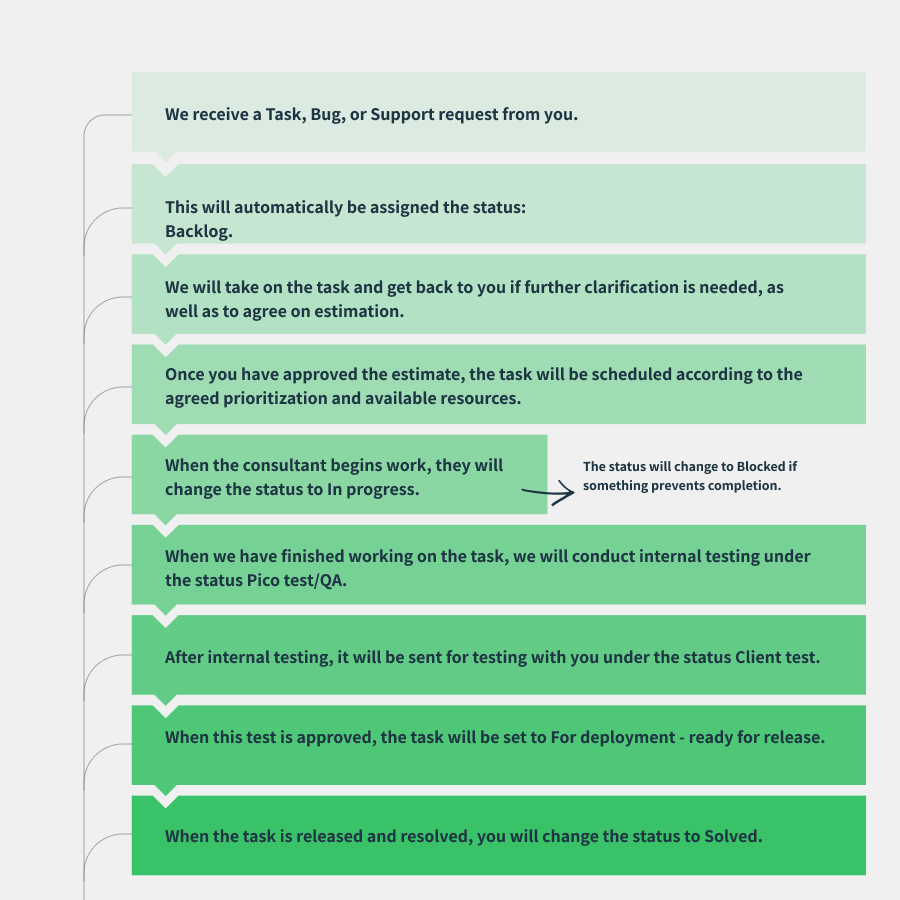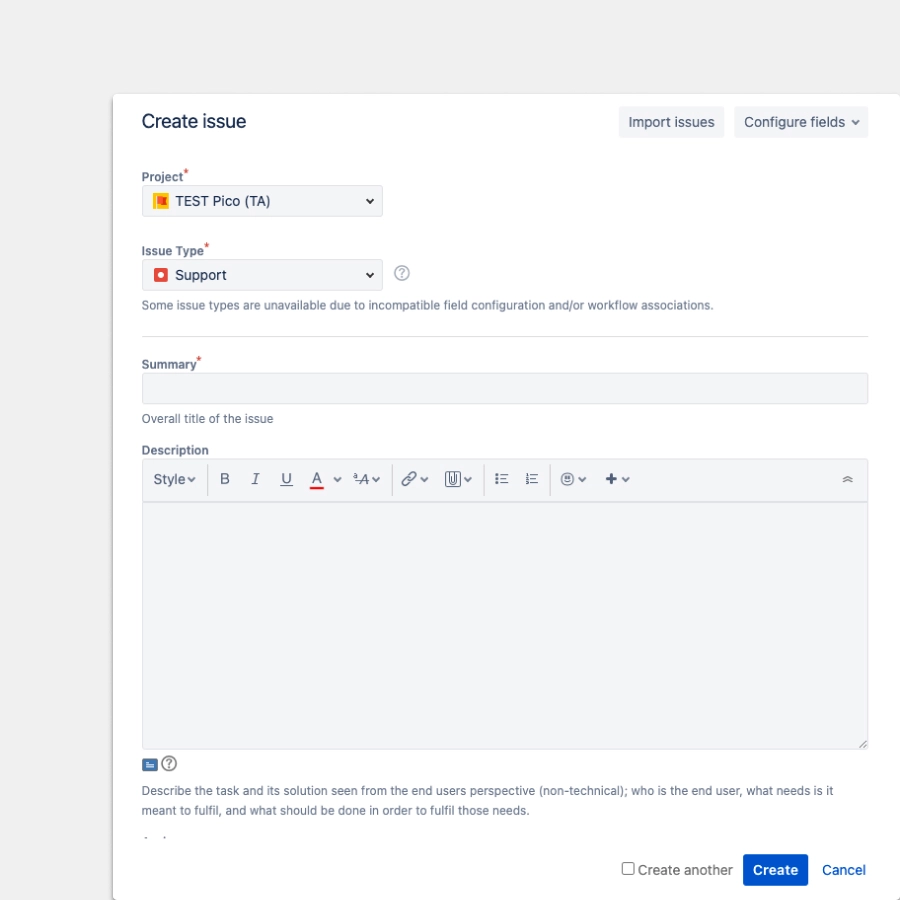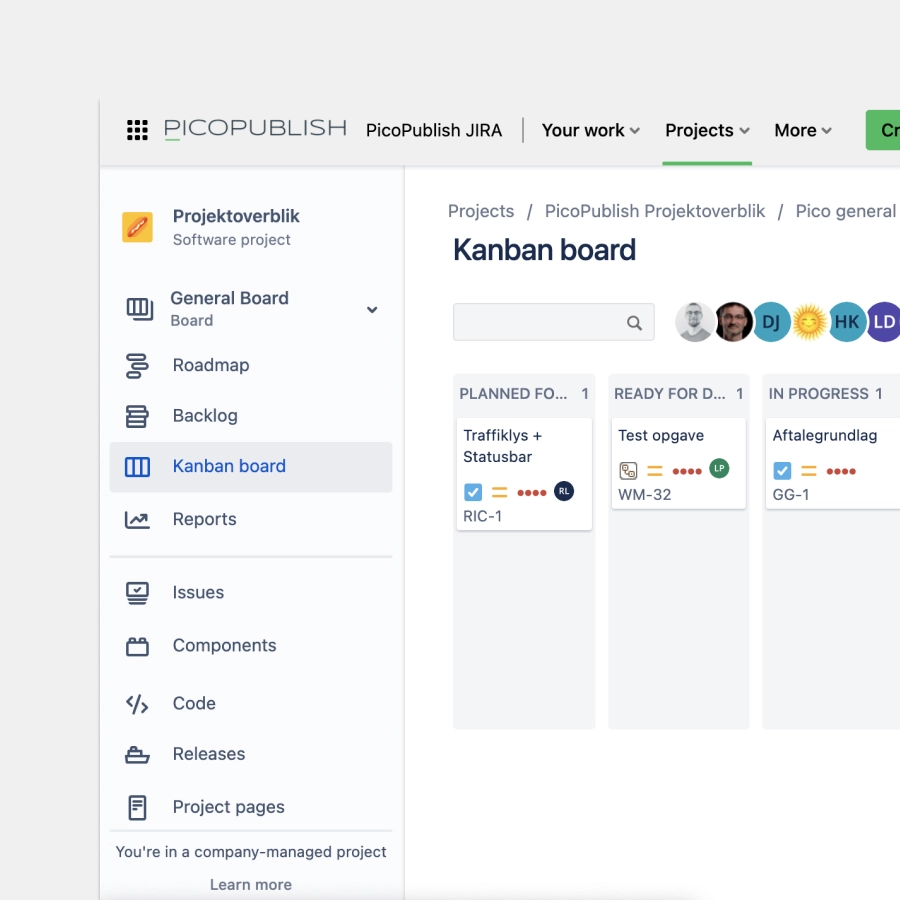We believe that transparency is a crucial part of a strong customer relationship—especially when it comes to processes and project management. Without clear structure and well-defined agreements, there's a risk of unnecessary misunderstandings that can escalate into conflicts. By using JIRA as our project management tool, we’ve created a shared space for dialogue, estimates, and progress tracking.
Poor or lacking communication is toxic to any project. In our experience, miscommunication often stems from a lack of process and/or proper project management.
When there’s no clear agreement on estimates, processes, timelines, deadlines, and roles, unnecessary conflicts tend to arise.
One project participant might feel ignored or overlooked. Or perhaps different parties interpret a verbal discussion in different ways—something that can lead to unpleasant surprises when a solution is demonstrated or delivered, or when the invoice for the work is received.
To reduce risks related to communication, reporting, and delivery estimation, we at PicoPublish have made the project management tool JIRA a mandatory part of how we collaborate with our customers. This has led to:
-
Improved task handling and task reporting
-
Fewer misunderstandings
-
Better alignment of expectations regarding estimates and deliverables
-
The ability to incorporate learnings from individual projects into our overall methodology and process framework.


How JIRA Creates Structure
JIRA Can Be Customized Almost Infinitely. At PicoPublish, we've tailored JIRA to support our specific needs—and by extension, the needs of our customers. This means our daily work on projects is supported in the best possible way.
When a new project is initiated, a dedicated customer project is created in JIRA. This project inherits a set of standard features tailored to fit our project organization. The customer is then invited into JIRA and receives a custom JIRA guide that explains how to use the system effectively.
The advantage of working in JIRA is that our customers gain the freedom to create and define tasks themselves, while we’re able to maintain clear documentation of task descriptions, our estimates, comments, and key project data such as the Definition of Done, subtasks, priorities (high/low), deadlines, and more.

Easy Creation of Issues, Bugs, and Support Tickets
Typically, there is already a business case for the project by the time we start working in JIRA.
Based on the customer’s needs and the agreed deliverables, the project is broken down into manageable tasks that are created in JIRA’s backlog. Everyone involved in the project can then easily track which tasks are in the backlog, in development, or ready for testing/production.
Throughout the entire project, there is full visibility into its progress. Everyone can also comment on issues or tasks, add requests, or highlight gaps and opportunities during the development process. These do not have to go through a project manager or be approved by an external party. When a new ticket is created, it must be estimated before the solution is deployed to production.

Streamlining Task Management and Reducing the Risk of Lost Decisions
One of the advantages of having a shared workspace in JIRA is that all clarifications and conclusions can be documented in one single platform.
This prevents the project team from losing important information in individual participants’ notebooks, emails, or phone calls. Instead, all formal documentation is kept directly in the project’s main workspace, where it can also be searched using free text.
Throughout the development process, JIRA primarily serves as a tool for monitoring progress.

Handover of Solutions Made Easier
We are often brought into situations where we take over projects and solutions from previous suppliers. In these cases, we find that JIRA makes communication about errors, issues, and requests much easier for all parties involved.
With JIRA, our customers can create tasks, issues, and bugs themselves. Typically, our customers are experts in their own systems, so the tasks created in JIRA provide a solid foundation for detailed dialogue, advice, and collaboration.
Following the process outlined above, all created tickets are analyzed and estimated internally, and together we agree on a “Definition of Done.” Once the customer approves an estimate, the task is started as soon as possible. From that point on, everyone involved in the project can follow the task’s progress directly in JIRA’s Kanban Board.

Improved Documentation, Communication, Specification, and Planning
The introduction of JIRA has resulted in our customers experiencing shorter response times, better visibility into project progress, and a reduced need to resolve conflicts. It is also a critical part of maturing our internal processes, as JIRA enables us to create the right level of standardization around our projects and workflows.
When all parties in a project always have access to the current status of task completion, it becomes easier to be proactive in project communication. Spending less time on reporting means we have more time for valuable clarifications, advice, and collaboration.
Each year, we also conduct a survey among existing customers, which gives us the opportunity to further refine our processes and methods. This knowledge is fed back into our project management team and JIRA, where the solution is continuously improved.
